Unveiling the Surprising
Healing Power of Chemistry
Introduction
Chemistry, often regarded as an intricate and academic science, holds a profound capacity to heal and improve lives in numerous surprising and unconventional ways. Beyond its traditional applications, chemistry plays an unexpected role in promoting healing and well-being. In this article, we will explore some of the most unexpected and lesser-known ways chemistry contributes to healing and enhancing human health.

Aromatherapy and Essential Oils
The world of aromatherapy and essential oils is a testament to chemistry’s influence on healing. Chemistry underpins the extraction, analysis, and understanding of the therapeutic properties of essential oils. These volatile organic compounds have diverse healing effects, ranging from relaxation and stress reduction to aiding in pain management. Go to article >
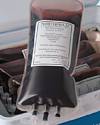
Artificial Blood Substitutes
In emergency situations, synthetic blood substitutes, developed through chemical engineering, could provide a surprising lifeline. These substances could temporarily replace lost blood, maintaining tissue oxygenation and blood pressure, ultimately supporting the body’s healing processes. Go to article >

Chemical Exfoliants for Skin
Chemistry is behind the formulation of chemical exfoliants like alpha hydroxy acids (AHAs) and beta hydroxy acids (BHAs) found in skincare products. These compounds help shed dead skin cells, improve skin texture, and rejuvenate the skin. Beyond aesthetics, they can play a role in treating skin conditions like acne and aging. Go to article >

Chemical Sunscreens for Skin
Chemical compounds present in sunscreens, such as avobenzone and oxybenzone, protect the skin from harmful UV radiation. By absorbing and dissipating UV rays, these chemicals prevent sunburn and reduce the risk of skin cancer, unexpectedly contributing to healing by preventing harm. Go to article >
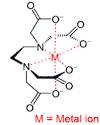
Chelation Therapy
Chelation therapy employs chemical agents like EDTA to remove heavy metals from the body, offering unexpected healing benefits. Primarily used to treat heavy metal poisoning, it also shows promise in managing conditions like atherosclerosis, contributing to cardiovascular health. Go to article >
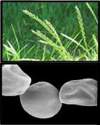
Chemical-Mediated Allergen Immunotherapy
Allergen immunotherapy utilizes chemistry in the preparation and standardization of allergen extracts. This therapy exposes patients to controlled amounts of allergens to desensitize the body, offering an unexpected solution to allergies. Go to article >
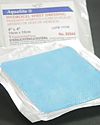
Hydrogel Dressings
Hydrogels, cross-linked polymer networks with high water content, find an unconventional application in wound dressings. These dressings create a moist environment, unexpectedly accelerating wound healing, reducing scarring, and promoting overall tissue repair. Go to article >

Botulinum Toxin (Botox) for Migraine Treatment
Botulinum toxin, commonly known as Botox, is renowned for its cosmetic applications. However, it surprisingly holds FDA approval for chronic migraine treatment. By blocking neurotransmitter release, it reduces pain signals, offering respite to migraine sufferers. Go to article >
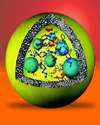
Microencapsulation for Drug Delivery
Chemistry’s innovation in microencapsulation enables precise drug delivery. This technique encapsulates medications in tiny capsules, facilitating controlled and sustained release at specific sites in the body, ensuring that patients receive the right dose at the right time. Go to article >

Chemical Odor Eliminators
Chemistry comes to the rescue in healthcare settings and wound care products by creating odor-neutralizing chemicals. These compounds control unpleasant odors, creating a more comfortable and hygienic environment for patients and caregivers alike. Go to article >

Chemical Enhancement of Taste and Flavor
For patients with altered taste perceptions due to illness or medical treatments, chemistry steps in to develop flavor-enhancing compounds. These surprising solutions make food more palatable, encouraging adequate nutrition during recovery. Go to article >
Conclusion
Chemistry’s healing power transcends traditional boundaries, offering surprising and unexpected solutions to a myriad of health challenges. From the therapeutic properties of essential oils to synthetic blood substitutes, chemical exfoliants, and the innovative use of microencapsulation, chemistry continues to demonstrate its capacity to heal and improve lives in unconventional and astonishing ways. As researchers and scientists delve deeper into the chemistry of healing, we can anticipate even more unexpected breakthroughs that will enhance human health and well-being.
Content aggregated and written by ChatGTP, using Webmaster’s prompt: “what are some of the most unexpected ways the power of chemistry applies to healing?” The article may contain errors.




